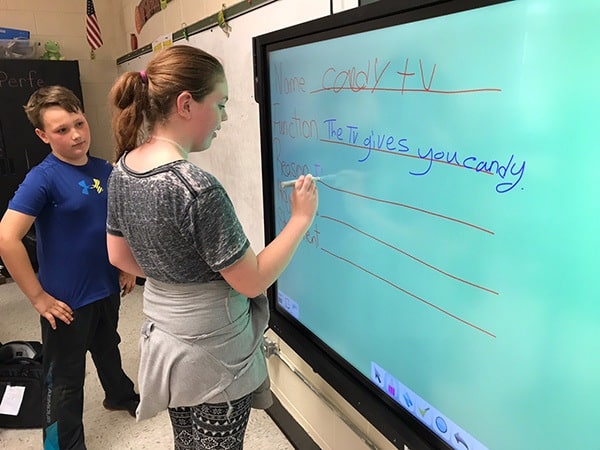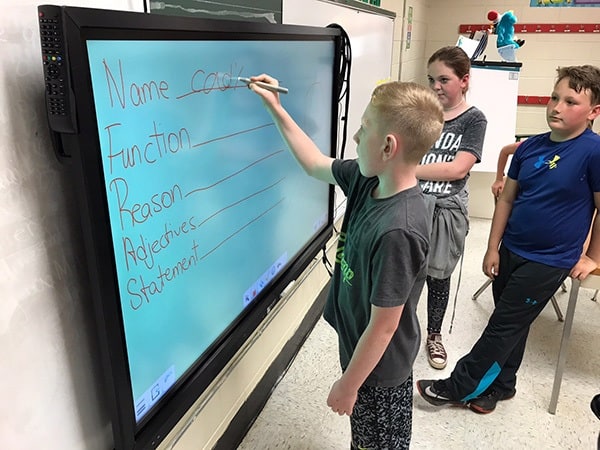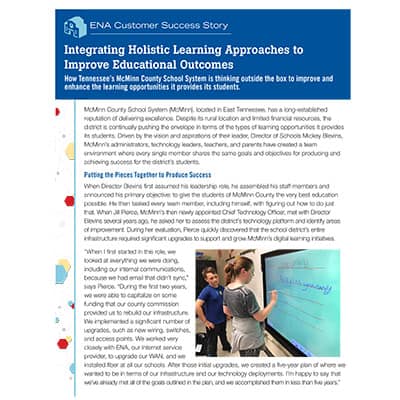Customer Success Story

Putting the Pieces Together to Produce Success
When Director Blevins first assumed his leadership role, he assembled his staff members and announced his primary objective: to give the students of McMinn County the very best education possible. He then tasked every team member, including himself, with figuring out how to do just that. When Jill Pierce, McMinn’s then newly appointed Chief Technology Officer, met with Director Blevins several years ago, he asked her to assess the district’s technology platform and identify areas of improvement. During her evaluation, Pierce quickly discovered that the school district’s entire infrastructure required significant upgrades to support and grow McMinn’s digital learning initiatives.
“When I first started in this role, we looked at everything we were doing, including our internal communications, because we had email that didn’t sync,” says Pierce. “During the first two years, we were able to capitalize on some funding that our county commission provided us to rebuild our infrastructure.
We implemented a significant number of upgrades, such as new wiring, switches, and access points. We worked very closely with ENA, our Internet service provider, to upgrade our WAN, and we installed fiber at all our schools. After those initial upgrades, we created a five-year plan of where we wanted to be in terms of our infrastructure and our technology deployments. I’m happy to say that we’ve already met all of the goals outlined in the plan, and we accomplished them in less than five years.”
Critical Infrastructure Upgrades—Partnering With ENA to Rapidly Increase McMinn’s Internet Access and Upgrade Its WAN
As demonstrated by the timeline below, McMinn has made significant improvements to its network infrastructure over the course of just a few years.

In addition to overseeing significant infrastructure upgrades, Pierce and her team also began evaluating and implementing new solutions that would help the district’s staff members communicate and collaborate more effectively. “We are really focused on building and supporting a team environment in McMinn,” says Pierce. “Microsoft OneNote has enabled us to create an environment of privacy plus collaboration. Many of our principals are using it with their teachers, and it’s saving them valuable time by significantly reducing the number of emails they receive and the number of meetings they attend. We are also using it with our students to create more collaborative learning opportunities.”
A New Approach to Learning
With a solid infrastructure in place and a reliable means of communication established, McMinn’s leaders turned their attention to evaluating technologies that could enhance their students’ overall learning experience. Devices have been a focus for the district’s leaders—five years ago McMinn was 1:6 in terms of its device to student ratio and now the district is approximately 1:2—but they have also explored and researched other means of using technology to bridge access and learning gaps experienced by its students.
Pierce worked with a local doctoral candidate to analyze some of the inherent disadvantages and physical limitations many students experience upon stepping foot into the classroom. The research primarily centered around cognitive hearing loss and impaired vision. “We test our students’ hearing levels, but the ambient noises that exist within a classroom can impair a student’s ability to hear a teacher clearly,” says Pierce.
“Adults can generally fill in the blanks if they miss part of a conversation and still grasp the meaning of what is being conveyed. However, our research showed that most students lack the ability to string together a message from just a few words, impacting their ability to absorb and comprehend the lesson if they can’t hear their teacher. Similarly, if a projector or a white board is too dim, it can be difficult for students with even perfect vision to read the words, disrupting and impeding the learning process. Again, adults can often piece together the meaning of a concept even if they can read just a handful of words, but students lack that ability. To assist our student with both of these issues, we created our ‘even playing field classroom’ model.”
The “even playing field classroom” model is based on the idea of equipping every classroom with the tools and resources needed to optimize and enhance the learning environment for every student. McMinn’s leaders had the school district’s technical staff evaluate how to best meet the needs of the students from a technical aspect—what infrastructure was required to support new technologies, what equipment did the district need to prevent these types of audio and visual disruptions from occurring, and what would the installations entail.
McMinn’s teachers and administrators were also involved in the evaluation and planning process. At the end of February 2017, the “even playing field classroom proposal” was reviewed and approved by McMinn’s school board, with the board approving funding to purchase new touchscreen whiteboards and audio enhancements systems for McMinn’s 375 classrooms.
“The concept behind this classroom is that when our students walk into any room at McMinn, they are immediately on an even playing field in terms of their hearing and visual capabilities,” says Pierce. “Every classroom will have three-point accessibility—keyboard, touchscreen, and stylus—to accommodate each teacher’s instructional approach. For example, it is very difficult for a math instructor to teach math using a touchscreen or a keyboard. With this new system, they will have access to a stylus they can use to write down and solve problems. This provides teachers the flexibility they need to be successful in their classrooms.”
Holistic Well-Being of Students

McMinn’s even playing field classroom fits into the district’s overall holistic approach to learning. “Everything we do at McMinn is about improving each child’s learning experience,” says Pierce. “We look beyond instruction and analyze how we can improve every aspect that impacts a child’s ability to learn and thrive in the classroom. For example, we provide no cost breakfast for every student in our district regardless of their economic standing. Studies show that students are more engaged, alert, and perform better in the classroom after eating breakfast, so we made breakfast available at no cost for every student.”
Next Steps
Like many other school districts in the nation, McMinn is in the midst of planning and deploying its initial 1:1 sites. Instead of deploying devices on a grade-wide or schoolwide basis, McMinn is empowering its teachers by giving each one the choice to become an early-adopter of the new devices. The school district’s initiative, named “Right Time Teachers,” requires teachers to apply to become one of the district’s first forty classrooms that receives the 1:1 devices.
McMinn’s leaders have a blind scoring rubric that they will use to evaluate each teacher’s application to ensure they are selecting innovative and effective teachers who want to implement technology to enhance their students’ learning. “We are excited about our 1:1 program, but we want to ensure our teachers are using the technology when it’s the right time to do so,” says Pierce. “Sometimes using a pen and paper make more sense in certain situations, and we don’t want to take that decision away from our amazing teachers. These ‘right time teachers’ will pave the way for their colleagues and serve as models and mentors for our other teachers within McMinn as we deploy more devices.”
McMinn’s recent infrastructure upgrades combined with its comprehensive technology integration strategy are transforming an already high-performing school district into a thriving, student-centered learning institution where providing for the holistic well-being of each child is the focus. “None of this would work if we didn’t have a good team concept,” says Pierce. “Director Blevins’s leadership and the support of our school board has enabled us to establish a reputation of excellence. At McMinn, we are building for the future and integrating the resources and tools our students need to be successful.”

